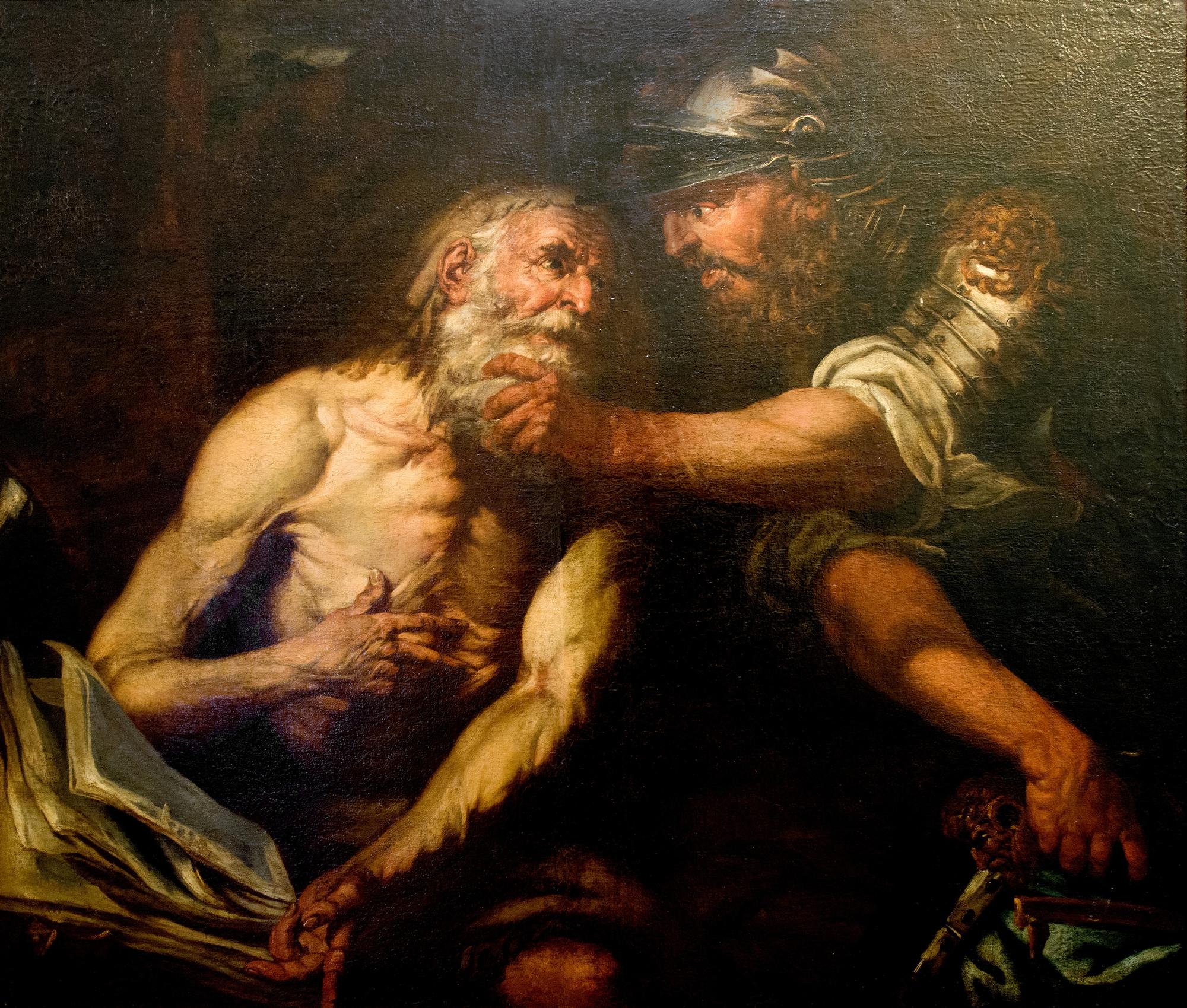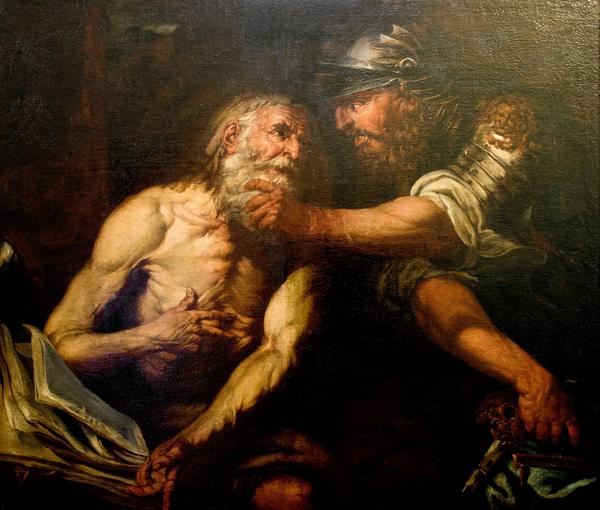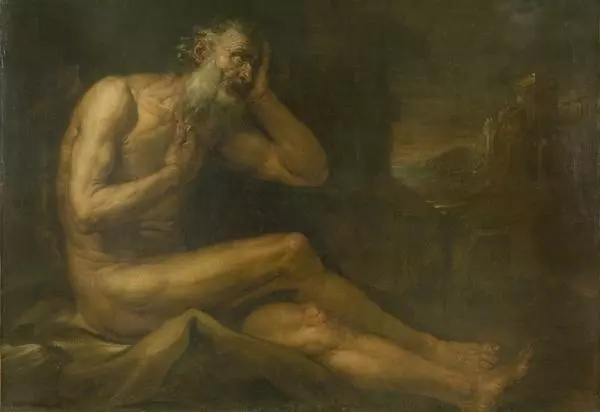‘Death of Archimedes’ was supposedly painted by the famous Italian artist of Baroque epoch Giovanni Battista Langetti (1625-1676). The painter often opted for the dramatic stories for his paintings, for example, Job’s suffering, Saint Sebastian’s execution, death of Archimedes. Such choice was required by his time. During the Baroque epoch the painters were trying to feature the strong emotional sufferings, the intensity of emotions at their canvases. Originally dramatic plots and stories were the best for that. One of such stories is the death of Archimedes (288 BC — 212 BC), the famous mathematician, physician and an engineer from Ancient Greece.
Archimedes was born in Syracuse, the largest antique city in the 3rd century BC. The prosperity of Syracuse coincided with Archimedes’ lifetime. Back then the city was prosperous, its atmosphere was calm, sciences and arts flourished. In 214 BC the Romans headed by Marcus Claudius Marcellus tried to conquer the city. However, the Roman army faced with the unexpected counteraction. The people of Syracuse defended themselves with the help of far-ranging and short-ranging catapults. The ships that managed to break through up to the city gates were getting trapped: the ships’ heads were getting hooked by the forceful crane that lifted them as high as possible and later threw back into the water which led to the ships’ sinking. The cranes were well masked so it was pretty hard to get away from them. These all were the Archimedes’ inventions.
Two years after the city’s siege the Romans managed to get into Syracuse. At the time Archimedes was already 75 years old. There are different versions of the mathematician’s death, but they all have similar features. For example, the Roman warriors were told not to kill Archimedes, but to capture him alive so he could invent new weapons for the Roman army. Moreover, many versions agree that with the Roman’s appearance Archimedes asked the warrior not to touch his drafts and let him finish them. The furious Roman warrior didn’t recognize the mathematician and killed him.
The moment of the Roman’s breaking into the Archimedes’ place is depicted at Langetti’s painting. The old man is working with his papers. The gesture of his hand pressed to the body, the head position and the gaze express the plea. In contrast with him the image of a Roman warrior is furious. He grabbed an old man by his chin with his strong hand, his very gesture is about to say, “don”t wait for mercy”. In his work the artist used “chiaroscuro”, an effect of contrasted light and shadow appreciated by caravaggisti. The men’s figures and the Archimedes’ papers are lit, while the space between them is wrapped in darkness.
Archimedes was born in Syracuse, the largest antique city in the 3rd century BC. The prosperity of Syracuse coincided with Archimedes’ lifetime. Back then the city was prosperous, its atmosphere was calm, sciences and arts flourished. In 214 BC the Romans headed by Marcus Claudius Marcellus tried to conquer the city. However, the Roman army faced with the unexpected counteraction. The people of Syracuse defended themselves with the help of far-ranging and short-ranging catapults. The ships that managed to break through up to the city gates were getting trapped: the ships’ heads were getting hooked by the forceful crane that lifted them as high as possible and later threw back into the water which led to the ships’ sinking. The cranes were well masked so it was pretty hard to get away from them. These all were the Archimedes’ inventions.
Two years after the city’s siege the Romans managed to get into Syracuse. At the time Archimedes was already 75 years old. There are different versions of the mathematician’s death, but they all have similar features. For example, the Roman warriors were told not to kill Archimedes, but to capture him alive so he could invent new weapons for the Roman army. Moreover, many versions agree that with the Roman’s appearance Archimedes asked the warrior not to touch his drafts and let him finish them. The furious Roman warrior didn’t recognize the mathematician and killed him.
The moment of the Roman’s breaking into the Archimedes’ place is depicted at Langetti’s painting. The old man is working with his papers. The gesture of his hand pressed to the body, the head position and the gaze express the plea. In contrast with him the image of a Roman warrior is furious. He grabbed an old man by his chin with his strong hand, his very gesture is about to say, “don”t wait for mercy”. In his work the artist used “chiaroscuro”, an effect of contrasted light and shadow appreciated by caravaggisti. The men’s figures and the Archimedes’ papers are lit, while the space between them is wrapped in darkness.




